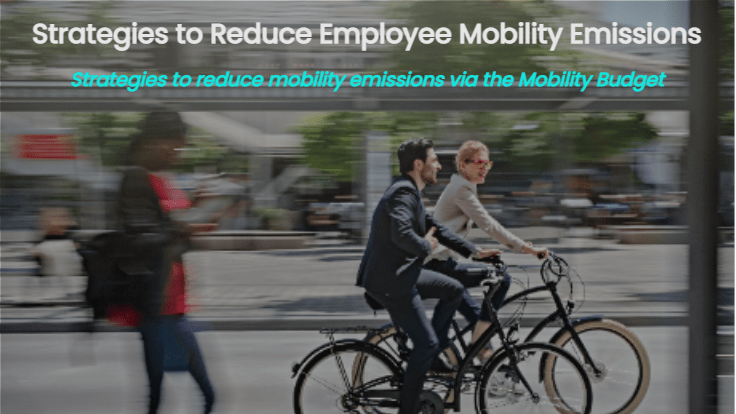
White Paper: Strategies to Reduce Employee Mobility Emissions
639 days ago
3 minutes
Source: Autonomy
The new White Paper sees sustainable mobility network Autonomy partner with Capgemini Invent to present a report on Sustainable Corporate Mobility
The report covers a range of topics, including organization-specific actions, regional initiatives, real-world obstacles, and potential solutions. The full summary, provided by Autonomy, can be read below:
- How companies have a strong opportunity to impact employees’ mobility choices: Studies suggest that commuting constitutes as much as 98% of an employee’s work-related emissions. Employers have a responsibility to help their employees in reducing their emissions and there are many recent examples of companies rolling out initiatives to promote sustainable commuting habits. Examples of such initiatives from companies such as IKEA are explored throughout the white paper.
- The origin and current state of corporate mobility regulations in France and other countries: Two and a half years after the Mobility Orientation Law came into force in France, 38% of private sector employers have responded, saying they have deployed a Company Mobility Plan (or FMD, Forfait de Mobilités Durables) within their organization. This is an increase of 12 points compared to 2021. Today, nearly 80% of employers are aware of this system, and 40% of organizations are considering deploying it. While this paper focuses on France as a use case, it also looks into other countries such as the Netherlands and Belgium.
- The obstacles companies are facing in developing real corporate mobility strategies: There are a number of barriers to implementing corporate mobility strategies. For instance, regulations do not directly help companies to develop a corporate mobility strategy. In the case of France, while the LOM offers new features like the FMD (Company Mobility Plan) and the Crédit Mobilité (Mobility Credit), both these features do not directly translate into a majority of companies developing a strategy for corporate mobility. There is a problem with the legislation not sufficiently incentivizing companies to take action quickly.
- Impactful solutions according to different companies’ constraints: To address more diverse commuting patterns and incentivize employees to use greener transportation modes, companies usually start by improving their infrastructure, by offering secured parking spots for bikes and installing electric charging stations. In addition to this, companies can also provide subsidized costs to employees to use public transportation. While the current legislative framework is slowly encouraging companies to act on corporate mobility, a solid corporate mobility strategy needs the right governance and mobility solutions developed at the local level, accounting for each site’s characteristics. Lastly, there is an increasing availability of different tools that are available to companies to ease their relationship with third-party providers and change the way they provide corporate mobility plans.
Download the full report via the Autonomy website, here.

LEVA EU
Campaign success
Lorem ipsum dolor sit amet, consectetur adipisicing elit, sed do eiusmod tempor incididunt ut labore et dolore magna aliqua.
Member profile
Lorem ipsum dolor sit amet, consectetur adipisicing elit, sed do eiusmod tempor incididunt ut labore et dolore magna aliqua.
